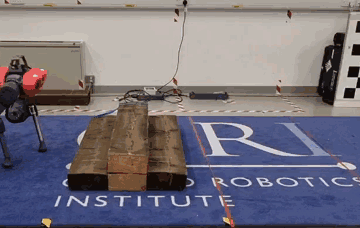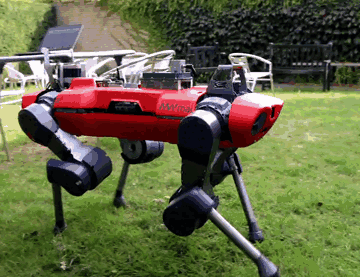Learning Low-Frequency Motion Control for Robust and Dynamic Robot Locomotion
Siddhant Gangapurwala, Luigi Campanaro and Ioannis Havoutis
Experiments performed on ANYmal C with a motion control frequency of 8 Hz.
Abstract
Robotic locomotion is often approached with the goal of maximizing robustness and reactivity by increasing motion control frequency. We challenge this intuitive notion by demonstrating robust and dynamic locomotion with a learned motion controller executing at as low as 8 Hz on a real ANYmal C quadruped. The robot is able to robustly and repeatably achieve a high heading velocity of 1.5 m/s, traverse uneven terrain, and resist unexpected external perturbations. We further present a comparative analysis of deep reinforcement learning (RL) based motion control policies trained and executed at frequencies ranging from 5 Hz to 200 Hz. We show that low-frequency policies are less sensitive to actuation latencies and variations in system dynamics. This is to the extent that a successful sim-to-real transfer can be performed even without any dynamics randomization or actuation modeling. We support this claim through a set of rigorous empirical evaluations.
We additionally provide training and deployment code for the Low-Frequency Motion Control (LFMC) framework to assist reproducibility and rapid benchmarking.
Manuscript
Preprint: arxiv.org/abs/2209.14887
@article{lfmc-locomotion,
title = {Learning Low-Frequency Motion Control for Robust and Dynamic Robot Locomotion},
author = {Gangapurwala, Siddhant and Campanaro, Luigi and Havoutis, Ioannis},
url = {https://arxiv.org/abs/2209.14887},
publisher = {arXiv},
year = {2022},
doi = {10.48550/ARXIV.2209.14887},
}





